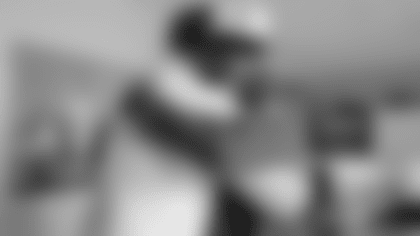Last week's NFL Annual Meeting in Arizona brought debate to multiple rules, including discussion on what should happen on the play after a touchdown.
A scoring team currently receives the ball at the opponent's 2-yard line and has the option of kicking an extra point (a total distance of 20 yards), which is most commonly what happens and was successful 99.6 percent of the time in 2014. NFL teams also have the option of going for 2, which they rarely do unless they are: a) trailing by a number that they'd like to reduce to a one-score game; b) leading by a number that could still result in a loss if the other team scores.
The Vikings were 4-for-4 on two-point conversions in 2014, capitalizing with runs by Matt Asiata against Washington and Miami, and passes from Teddy Bridgewater to Rhett Ellison against Atlanta and from Bridgewater to Charles Johnson at home against Green Bay.
Minnesota also stuffed the only two-point conversion attempt it faced (a run by Washington's Robert Griffin III), and the Vikings also helped prevent a 100 percent league-wide rate when Everson Griffen blocked an attempt by Shayne Graham.
Sports Illustrated's Peter King reported in his **Monday Morning Quarterback column*** *that 30 of 32 teams said they would like the PAT procedures changed.
A rule change requires a vote by 24 of 32 teams (75 percent), so while there may be enough of a consensus for change, there is still debate on how the play should be amended. There's a chance, if a consensus is reached by May, that a new procedure could be part of games this fall (the topic was also discussed in part of Vikings.com's **Monday Morning Mailbag** with Mike Wobschall).
King reported the following is the "most likely compromise to be advanced, and the most likely way the league will amend how teams can score after a touchdown":
- Teams will have a choice whether to go for one or two points after a touchdown, from different distances.
- If the offensive team chooses to kick for one point, the scrimmage line will move from the 2-yard-line to the 15-yard line, making it a 32- or 33-yard attempt.
- If the offensive team chooses to go for two points, the scrimmage line will be either the 1-and-a half- or 2-yard line. There was much debate about making it the 1, the 1-and-a-half or the 2. The feeling about putting it on the 1 was that it could turn into too much of a scrum/push-the-pile play, or a fluky puncture-the-goal-line-with-the-ball-and-bring-it-back play by the quarterback. Putting it at the 1-and-a-half or leaving it at the 2 would increase the chances of a real football play with some drama.
- The defensive team would be able to score two points by either blocking the PAT and returning it downfield to the end zone, or by intercepting the two-point attempt and running it back, or recovering a fumble on the two-point play and returning it all the way.
Another topic of discussion that didn't lead to immediate action was a push to install fixed cameras at all stadiums to implement consistent views of scoring plays, which was adamantly supported by Patriots coach Bill Belichick.
NFL Media's Albert Breer reported the league will start research and development Monday into adding cameras to the goal line and other areas for replay, according to Kevin Patra of ***Around the NFL***:
*NFL Media's Albert Breer reports that the league will start research and development on Monday into adding cameras to the goal line and other areas for replay. *
Per Breer, the NFL is looking for "the right technology and then how to best integrate the cameras into the replay system that will work in all 31 stadiums."
In addition to what happens after a score, owners could decide to place more review capabilities on touchdowns in May when they convene in San Francisco.





















